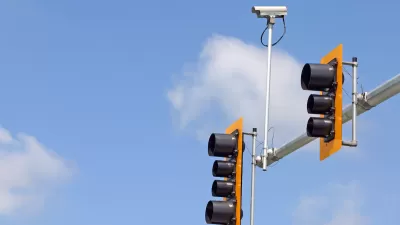Urban explorer and urban ethnographer Bradley L. Garrett argues that the act of urban exploration has become increasingly misunderstood, and misinterpreted through the lens of a recent popular fascination with ruin fetishism.
He also argues against law enforcement treating people with active interests in the workings of cities as terrorists.
"Over the past few years, urban exploration has been the subject of numerous pop-cultural speculations and attempts at corporate colonization, ranging from a new line of Converse shoes to amateur documentaries to an iPhone app (hundreds of abandoned locations just $2.99!). Most are hoping, and largely failing, to capitalise, perversely, on the current financial crisis by dressing up dereliction as something marketable and hip, especially where it can be transmuted into "art". The tropes are multitudinous-endless Flickr photos of guys in their mid-twenties venturing from their suburb to "explore" something dangerous, some husk of a building left behind in the wake of economic devastation where they "get in touch with its history".
Those of us involved in the urban exploration community seem to now be fragmenting into camps roughly dividing those who are largely happy to play up to the latest media attempt at exploitation, self-publishing bad books and making Cafe Press t-shirts emblazoned with inside jokes that you clearly won't get unless you have photographed peeling paint in an abandoned asylum, and those who are risking bodily harm and incarceration to push the political potentialities of the practice to their breaking points, doing the types of infiltration that Chapman would have encouraged and been involved with."
FULL STORY: The fragmentation of urban exploration

Maui's Vacation Rental Debate Turns Ugly
Verbal attacks, misinformation campaigns and fistfights plague a high-stakes debate to convert thousands of vacation rentals into long-term housing.

Planetizen Federal Action Tracker
A weekly monitor of how Trump’s orders and actions are impacting planners and planning in America.

San Francisco Suspends Traffic Calming Amidst Record Deaths
Citing “a challenging fiscal landscape,” the city will cease the program on the heels of 42 traffic deaths, including 24 pedestrians.

Half of Post-Fire Altadena Home Sales Were to Corporations
Large investors are quietly buying up dozens of properties in Altadena, California, where a devastating wildfire destroyed more than 6,000 homes in January.

Opinion: What San Francisco’s Proposed ‘Family Zoning’ Could Really Mean
Mayor Lurie is using ‘family zoning’ to encourage denser development and upzoning — but could the concept actually foster community and more human-scale public spaces?

Jacksonville Launches First Autonomous Transit Shuttle in US
A fleet of 14 fully autonomous vehicles will serve a 3.5-mile downtown Jacksonville route with 12 stops.
Urban Design for Planners 1: Software Tools
This six-course series explores essential urban design concepts using open source software and equips planners with the tools they need to participate fully in the urban design process.
Planning for Universal Design
Learn the tools for implementing Universal Design in planning regulations.
Gallatin County Department of Planning & Community Development
Heyer Gruel & Associates PA
JM Goldson LLC
City of Camden Redevelopment Agency
City of Astoria
Transportation Research & Education Center (TREC) at Portland State University
Jefferson Parish Government
Camden Redevelopment Agency
City of Claremont





























